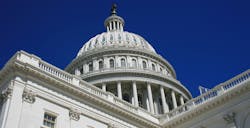Will it threaten market competition and Medicare access.
On April 1, 2014, President Obama signed into law the Protecting Access to Medicare Act of 2014 (PAMA). The bill, which had never undergone a congressional hearing or been subject to any study or evaluation, contained a complete overhaul of Medicare’s Part B Clinical Laboratory Fee Schedule (CLFS). PAMA required “applicable” laboratories, i.e., laboratories that receive a majority of their Medicare revenues from either the Clinical Laboratory Fee Schedule (CLFS) or the Physician Fee Schedule (PFS), to report their private insurer payment rates for every test, and the associated volumes of each test, beginning on January 1, 2016.
However, it took until October 2015 for the Centers for Medicare and Medicaid Services (CMS) to issue a proposed rule implementing this legislation, just three months before laboratories were supposed to begin reporting their private payer data. After significant pushback initiated by the National Independent Laboratory Association (NILA) and other stakeholders, and letters from members of Congress in opposition to CMS’s rushed effort to regulate, CMS did not issue a final regulation in time for the reporting process to begin on January 1, 2016. Instead, CMS issued a final rule on June 17, 2016 (almost one year late). However, CMS is still planning to rush implementation of the final rule by requiring laboratories to begin reporting private payment rates on January 1, 2017.
The intent of PAMA is to adjust Medicare payments to reflect “market” rates. However, it is the position of NILA and many others that the method for doing so outlined in CMS’s final rule does not undertake such an assessment.
The flaws in CMS’ final rule
Here’s why: The entire market includes payments received by hospital, physician office, and independent clinical laboratories. A “market rate” includes payments made to all of these entities. But CMS proposes to exclude a significant part of the market, hospitals, from reporting their private payer rates. And these hospital rates are frequently much higher than the rates paid to physician office laboratories and independent laboratories.
By excluding most hospital payment rates, CMS is arbitrarily limiting reported payment rates to the sector of the industry dominated by the two largest publicly traded laboratories. Those two laboratories frequently offer steep discounts on routine tests. CMS’s so-called market assessment will basically reassess all laboratory payment rates based on one segment of the laboratory market and will have that assessment dominated by the two large publicly-traded laboratories. This approach is a deliberate effort to dramatically reduce Medicare Part B CLFS payments.
Indeed, the Congressional Budget Office (CBO) scored PAMA laboratory payment reform at $2.5 billion in savings over 10 years. However, the budgetary impact assessment included in CMS’s final rule states that the agency anticipates $3.93 billion in savings. Clearly CMS envisions taking an ax to the Part B Clinical Laboratory Fee Schedule even before CMS conducts any assessment of laboratory payment rates. The June 17 rule provides no opportunity to understand how CMS gets to its final conclusion on revised rates. After a first run at a new, complicated program that has yet to be completely explained, CMS plans to list new rates that the laboratory community must accept. There is no transparency in this system, and community and regional laboratory businesses cannot survive extreme reductions based on skewed data reporting.
Furthermore, CMS has still not outlined in its final regulations, or otherwise, how laboratories are to report the trillions of data sets that must be provided or risk fines as high as $10,000 a day for non-compliance. The final rule states only that CMS will design and deploy a data collection system, with information forthcoming through subregulatory guidance. It is surprising that some laboratory organizations have congratulated and thanked CMS on issuing a delay in the regulation; in the absence of CMS providing more information that was not included in the final rule, applicable laboratories face nearly the same time crunch as they did when CMS tried to rush through a proposed rule last fall. Laboratories do not even have six months to begin the reporting process outlined in the June 17 final rule—and they are waiting on additional information that is nowhere in sight.
Making the case
In contrast to some lab organizations, NILA has been outspoken in its opposition to the PAMA law and the corresponding final regulation. NILA believes the new system, as designed, will do nothing more than eliminate laboratory competition, which couldn’t be worse for the Medicare program. If Medicare is left with a duopoly for independent laboratory testing services, access to testing will be limited at best, and eliminated at worst, for many beneficiaries in rural communities and skilled nursing facilities.
NILA continues to work with elected officials and other stakeholders to propose viable alternatives to CMS’s plan. Several members of Congress have weighed in with the agency to previously address the problems outlined, including the Senate Finance Committee Chairman, Senator Orrin Hatch (R-UT), and the Committee’s Ranking Member, Senator Ron Wyden (D-OR).
The timeline and the terms outlined by CMS are impossible and anti-small business, and they threaten Medicare beneficiary access to laboratory services. They support the business strategy of the most dominant players in the laboratory market by deliberately undercutting the rates to tests that are the bread and butter of many community and regional independent laboratories, while offering much higher rates for advanced diagnostic laboratory tests (ADLTs), which the largest laboratories will use to compensate for their steeply discounted rates on routine tests.
It is NILA’s position that PAMA regulations as outlined must not go into effect. Time is needed to address the concerns identified and fix this rule. The time is now for laboratories to stand up and tell Congress to stop CMS from moving forward as planned.
Julie Scott Allen serves as Washington representative for the National Independent Laboratory Association (NILA).
Mark S. Birenbaum, PhD, serves as NILA Administrator.





